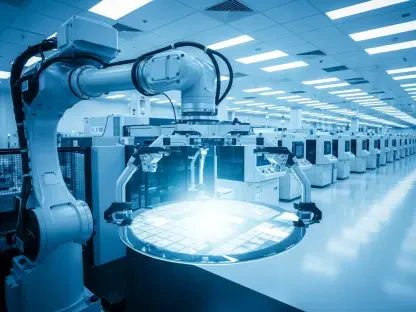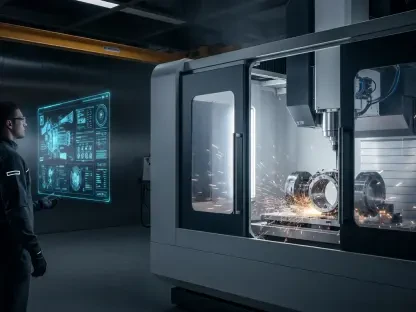What does it take to revolutionize space travel in an era where every second and every dollar counts? Picture a rocket engine, not pieced together with countless welds and joints, but crafted as one seamless, unbreakable unit. Agnikul Cosmos, an innovative Indian space startup born out of the Indian Institute of Technology – Madras, has achieved just that by unveiling what is claimed to be the world’s largest single-piece 3D-printed rocket engine. Made from Inconel, a high-performance nickel-chromium superalloy, this one-meter-long marvel signals a bold leap in aerospace manufacturing, promising to reshape how humanity reaches the stars.
This breakthrough is more than a technical feat; it represents a pivotal shift in the global space industry. With the space economy projected to soar to $1 trillion by 2040, cutting production time by over 60% and enhancing reliability could be the key to unlocking affordable access to space. Agnikul’s achievement stands as a beacon of innovation, proving that emerging players can challenge giants and redefine the rules of rocketry.
A Seamless Leap in Rocket Engineering
The traditional method of building rocket engines has long been a complex puzzle, with multiple components assembled through welds and fasteners. Each joint, however, introduces a potential point of failure under the extreme heat and pressure of a launch. Agnikul’s solution bypasses this entirely by using additive manufacturing to create a fully integrated engine in one piece, from fuel entry to plume exit. This approach eliminates structural weaknesses and slashes manufacturing complexity, setting a new standard for durability.
Beyond the design, the choice of material amplifies the impact. Inconel, known for withstanding punishing conditions, ensures the engine can endure the rigors of spaceflight while keeping weight low for optimal performance. This combination of technology and material science positions Agnikul at the forefront of a manufacturing revolution, offering a glimpse into a future where rocket engines are built faster, stronger, and more efficiently.
Why This Matters for the Future of Space
The aerospace sector has historically faced steep challenges, from skyrocketing costs to lengthy production timelines. A single traditional engine can take months to assemble, with each step increasing the risk of errors. Agnikul’s 3D-printed engine addresses these pain points head-on, reducing production time dramatically and minimizing human error by automating much of the process. This efficiency could translate into significant cost savings, making space missions more accessible to governments and private entities alike.
Moreover, the implications extend beyond mere economics. Enhanced reliability means safer missions, a critical factor as humanity pushes toward more ambitious goals like lunar bases and Mars exploration. With demand for satellite launches and space tourism growing, innovations like this are essential to meet the needs of a rapidly expanding industry, ensuring that space remains within reach for more players.
Behind the Innovation: Tech and Triumph
Diving deeper into Agnikul’s milestone reveals a trifecta of ingenuity. The core technology, additive manufacturing, builds the engine layer by layer, achieving precision that traditional methods can’t match. This process not only speeds up production but also optimizes fluid flow within the engine, boosting overall performance. Such advancements tackle long-standing flaws in rocket design, offering a blueprint for others to follow.
The impact is further magnified by strategic material use. Inconel’s ability to resist extreme temperatures and corrosion makes it ideal for the harsh environment of a rocket launch. By integrating this superalloy into a single-piece design, Agnikul has created an engine that’s not just innovative but also built to last, potentially reducing maintenance costs and extending operational life. This sets a benchmark for the industry, proving that cutting-edge tech can solve age-old problems.
Voices from the Vanguard
“This single-piece engine is a game-changer for both reliability and affordability in rocketry,” remarked a spokesperson from Agnikul Cosmos, capturing the excitement surrounding this achievement. The startup’s innovation has also earned a US patent, a significant milestone that protects their intellectual property in a fiercely competitive global market. This recognition enhances Agnikul’s appeal to international investors, highlighting India’s rising influence in space tech.
Support from key players has been instrumental in this journey. Partnerships with institutions like ISRO and INSPACe, alongside collaborations with industry leaders such as Wipro 3D, have provided critical resources and expertise. Additionally, backing from government bodies like the Department of Science and Technology (DST) reflects a national commitment to fostering space innovation, positioning Agnikul as a leader in the field with a robust network behind it.
Shaping the Space Tech Landscape
Agnikul’s success offers a window into the broader potential of additive manufacturing in high-stakes industries. This technology isn’t just transforming rocketry; it’s already making waves in fields like aviation and medical device production, where precision and efficiency are paramount. Following startups like Agnikul can reveal opportunities for investment or career growth, as small innovators often drive the biggest disruptions in established sectors.
For those eager to engage with this evolving landscape, staying informed is key. Tracking policy initiatives that support tech incubators, similar to India’s Technology Development Board (TDB), can uncover ways to contribute to or benefit from this wave of change. As additive manufacturing gains traction, it’s clear that the future of space exploration will be shaped by those who embrace and adapt to these groundbreaking methods.
Looking back, Agnikul Cosmos achieved a historic milestone by crafting the world’s largest single-piece 3D-printed rocket engine from Inconel, redefining efficiency and reliability in aerospace. Their patented design and strategic alliances with ISRO, INSPACe, and others underscored India’s growing stature in the global space arena. Moving forward, the challenge lies in scaling such innovations to meet rising demand—perhaps through expanded international partnerships or broader adoption of additive manufacturing across the industry. This breakthrough marked just the beginning, inviting stakeholders to invest in or advocate for policies that propel space tech into its next frontier.









